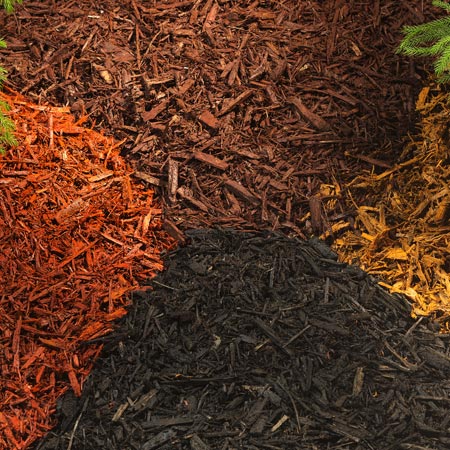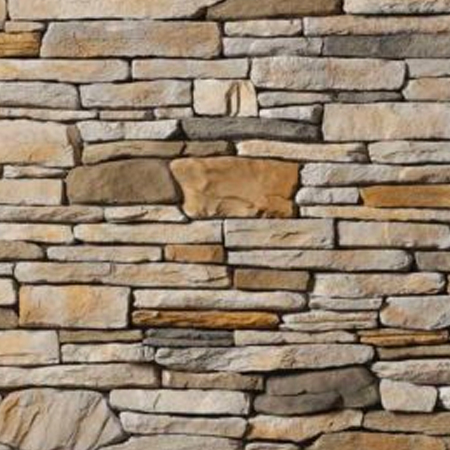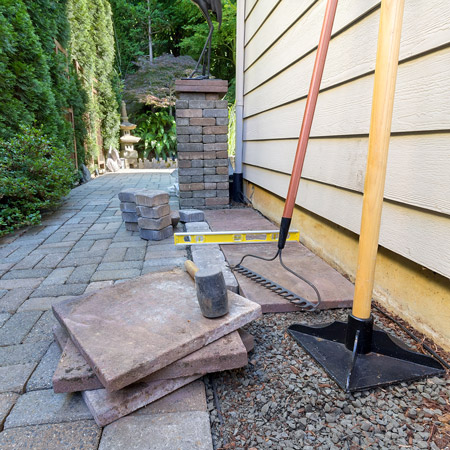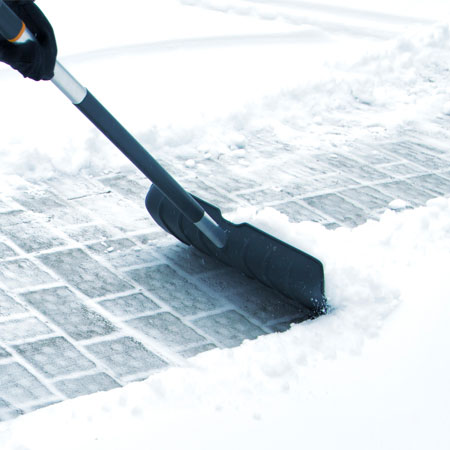
While the colored gravel of the 70s isn’t likely to resurface, despite the surge in popularity for decorative stone, natural colors designed to enhance the look and feel of modern landscaping and hardscaping design are more popular than ever before. This article will discuss the benefits of using decorative stone and give you some ideas on how you can use it to accent, enhance or modernize your landscaping right here in Rhode Island and Southeastern Massachusetts.
What You Need to Know About Stone Ground Cover
Before you rush out and purchase a couple tons of decorative stone, it is important to learn about the different types of decorative stone in Providence and the surrounding area that are used and available. J&J Materials has a wide variety of options available for homeowners and property owners who are looking for new ways to achieve sustainable landscaping goals.
- CRUSHED GRAVEL – The definition of “crushed gravel” is any type of stone ground cover that is crushed from larger rock. Once the material has been crushed it is fed through a sifter to separate out different sizes of rock. The finest size of crushed rock, which comes in at less than a quarter of an inch, but can range to as large as 2-inches in size. The benefits of using decorative stone that falls into this category is that it makes a great filler for stepping stone pathways, edging and basic stone ground cover. Tamping it down helps it to “anchor” into the ground so it will remain in place during inclement weather.
- RIVER ROCK – Known in the stone industry as “river rock” or “river run” gravel, this term is used to describe any type of decorative stone in Providence that has been naturally rounded and shaped by moving river water. It is usually separated by size, allowing homeowners to choose from small, medium, large and extra large sized river rock to use as stone ground cover or to create dry creek beds as a functional run-off for sustainable landscaping. It is important not to use river rock on a sloping surface, as the rounded edges of this type of decorative stone allows it to move and travel over time or with the flow of water, causing it to bunch and build up at the bottom of low spots or on the outside of curved areas.
- COBBLE STONE – This type of rock is “technically” a type of gravel because it is made from crushed rock, but it is much larger in size and is therefore used in a different way with sustainable landscaping. Cobble can be used as part of a dry creek bed and, because of their size, must be hand-placed into the landscape. Because of their shape, they are not suitable to use as a walking surface, either for people or for pets. The best use of cobble is to divide areas of hardscaping, landscaping and stone ground cover on your property to add a different texture and look to your garden.
How to Select the Best Type of Decorative Stone
Once you have decide what type of decorative stone you would like to use on your property, either crushed, river or cobble, it is time to start looking at the details. There are four primary elements that can help homeowners to choose what type of stone ground cover to use in their landscaping or hardscaping project.
- COLOR – While no one is encouraging the use of brightly-colored, dyed rock from the 70s, there are a wide range of natural colors available for homeowners to choose from. Beautiful browns, beiges and whites can be mixed and used together to create an interesting combination of color and texture in residential landscaping. Beautiful blues, grays and purples are also often available, adding a certain depth to decorative stone in Providence within gardens, pathways and stone ground cover edging. Darker colors and mixed colors are also available, providing homeowners with many distinct color choices that can be used as accents, borders and fillers. Choose colors based on taste, decor and style, but also consider that darker colors tend to absorb heat, while lighter colors tend to create a cooler ambient area, which can be an asset in sustainable landscaping projects.
- DEPTH – When stone ground cover is used in place of a lawn, it must be used in a thick layer to prevent bald spots, weeds and other issues. The thinner the decorative stone that you use, for example finely crushed gravel, the thicker the depth of the layer must be to prevent it from moving around too much. A two inch thickness is the minimum that should be used to replace a lawn, while a three inch or thicker layer must be used for a driveway or parking area to prevent movement. If you aren’t sure about the volume of gravel that will be required in order to reap the benefits of using decorative stone in this manner, speak with a professional at J&J Materials.
- BASE – A base layer should be used to add further protection against weed growth and other common landscaping issues. Plastic used to be the material of choice, but today most professional landscapers recommend fabric. The problem with plastic is that it will eventually break down, especially after repeated walking on the surface, allowing gravel to spread and weeds to pop up in no time. Weed barrier fabric is different, as it allows water and air to get down into the soil, while still blocking the light to prevent weed growth.
- COST – Compared to other sustainable landscaping materials, stone ground cover is very cost-effective and affordable. However, there are still lots of different types and pricing for decorative stone in Providence and all throughout the South Coast. Keep the cost in mind as you shop for stone ground cover and consider the benefits of using decorative stone. Also think about how you will move it. Stone is much heavier than grass seed and other landscaping materials. J&J Materials offers delivery services to Providence, Pawtucket and all throughout Southeastern Massachusetts. We also do not require you to buy a couple of tons per order. Just tell us how much you need and we will fill your order according to your specifications.
Where to Buy Decorative Stone in Providence
There are many different uses for stone ground cover in sustainable landscaping. In fact, decorative stone in Providence can be used in your garden, front yard, back yard, to build walkways and driveways, yet it can even be used indoors in plants, craft projects, fish tanks and much more. One of the benefits of using decorative stone is its versatility and valuable function. It can help to retain moisture in soil, block weed growth and improve drainage, while preventing soil erosion. J&J Materials has a wide variety of sizes, colors, shapes and styles of stone ground cover that would be perfect for any sustainable landscaping project in New England.






